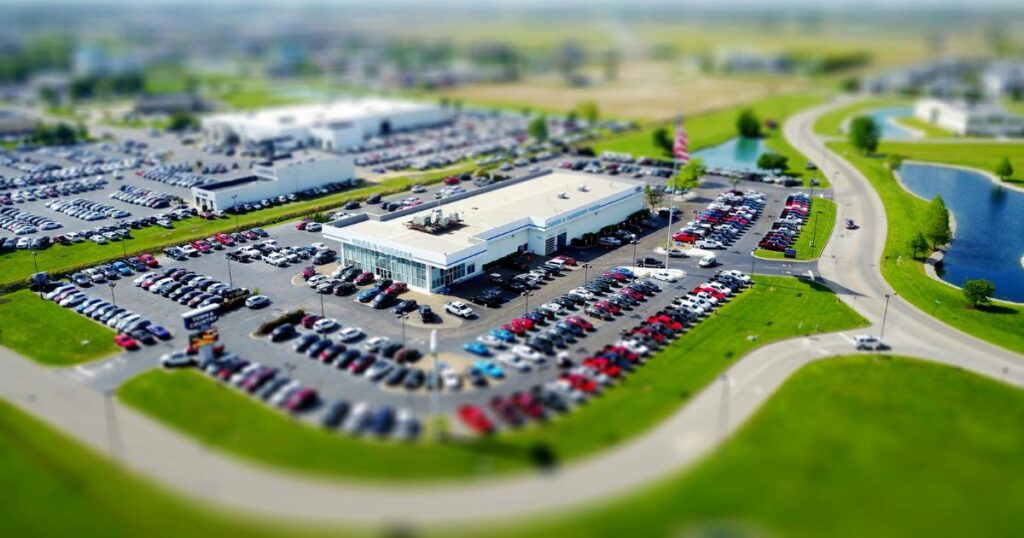When asking, “How much is motor trade insurance?” the answer varies based on several considerations. Typically, motor trade insurance premiums can range from a few hundred to several thousand pounds annually, influenced by the cover level and specific details of your business.
Key factors affecting how much motor trade insurance costs:
1. Type of cover
- Third-party only (TPO): This is the minimum legal requirement in the UK. It covers any damage or injury you cause to other people and their property while driving vehicles related to your business. However, it doesn’t cover any damage to the vehicles you own or are responsible for.
- Third-party, fire and theft (TPFT): In addition to the protections offered by TPO, TPFT covers you if the vehicles you’re responsible for are stolen or damaged by fire. This is particularly useful if you store vehicles overnight or for extended periods.
- Comprehensive: This is the most extensive cover available. It includes all the benefits of TPFT and also covers accidental damage to vehicles in your care, even if the accident was your fault. While it’s the most expensive option, it provides the highest level of protection, which can be crucial depending on your business activities.
2. Nature of business
The specific operations of your motor trade business play a significant role in determining your insurance premium. For instance:
- Vehicle sales: If you’re primarily buying and selling vehicles, insurers will consider factors like the volume of sales, types of vehicles sold, and whether you operate from premises or from home.
- Servicing and repairs: Garages that handle repairs or servicing may face higher premiums due to the potential risks involved with test-driving vehicles, handling hazardous materials, or operating heavy machinery.
- Vehicle recovery: Businesses involved in vehicle recovery might attract higher premiums because of the risks associated with towing vehicles, often in challenging conditions.
Each business type comes with its unique set of risks, and insurers adjust premiums accordingly.
3. Vehicles covered
The types of vehicles you deal with can significantly impact your insurance costs.
- Standard vehicles: Regular cars and light vans typically attract standard premiums.
- High-performance or modified vehicles: These are deemed higher risk due to their increased accident rates and repair costs, leading to higher premiums.
- Classic or vintage cars: Such vehicles may require specialist parts and expertise to repair, which can increase claim costs and, consequently, premiums.
- Heavy goods vehicles (HGVs): Handling larger vehicles often comes with increased risks, influencing insurance costs.
4. Driver details
The profiles of individuals named on your policy are critical.
- Age: Drivers under 25 are often seen as higher risk, leading to increased premiums. Conversely, very experienced drivers might attract discounts.
- Experience: The number of years a driver has held a licence, especially in the motor trade context, can influence premiums.
- Driving history: Past convictions, claims history, and points on a licence can all elevate insurance costs.
- Number of drivers: Policies with multiple named drivers, especially if they have varied risk profiles, can be more expensive.
5. Location and security
Where your business operates and the security measures you have in place can affect insurance premiums.
- Geographical area: Businesses located in areas with high crime rates or heavy traffic congestion might face higher premiums due to increased risks of theft or accidents.
- Premises security: Installing CCTV, alarms, secure fencing, and proper lighting can deter potential thefts or vandalism, potentially lowering premiums.
- Vehicle storage: Storing vehicles in secure locations, especially overnight, can reduce risks and, in turn, insurance costs.
6. Policy customisation
Tailoring your insurance policy to fit your business needs can influence costs.
- Public liability insurance: Protects against claims from third parties for injury or property damage resulting from your business activities.
- Employer’s liability insurance: A legal requirement if you have employees, covering claims from staff injured or made ill due to their work.
- Product liability insurance: Covers claims related to products you’ve sold or supplied that cause harm.
- Tools and equipment cover: Protects against loss or damage to your business tools and equipment.
- Business interruption insurance: Covers lost income if your business operations are halted due to events like fires or floods.
While adding these covers provides comprehensive protection, they also increase premiums. However, opting for a higher voluntary excess can reduce premiums but means you’ll pay more out-of-pocket if you make a claim. We also offer specific liability insurance policies.
Motor trade insurance
Navigating the complexities of motor trade insurance can be a lot, but we are here to simplify the process for you. Get in touch with us and we’ll do our best to help you get the best deal. If you require cover for your motor trade business, find out more about our product options and complete a quote form in a matter of minutes.
